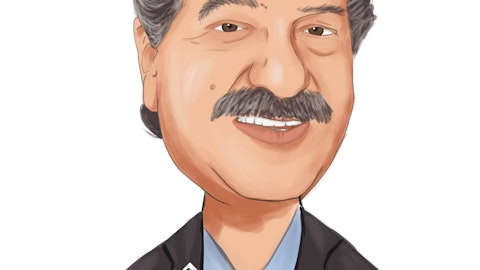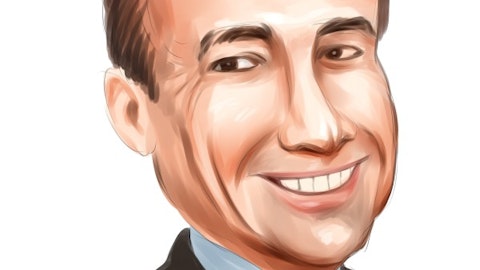Ty Silberhorn: Yes. Remember, we had this combination of two things. So, Sotawall has been integrated into that business now. So, everything’s operating under the Harmon brand. We knew our fiscal 2024 was going to be a challenge because these are jobs won in calendar 2020 and 2021. So, there was lower volume available to win, on top of margins were squeezed, then layer in some of the Sotawall projects that we are running through this fiscal year, those get behind us. And then a few of those Harmon jobs that we had in Q4 and we had a handful in Q1. We’ve had to take some write-downs on those projects just with how they’re performing. And because those were one in calendar 2020 and 2021, they were already tight on margins. So, as we look at the quarter, it performed, I would say, a little worse than we expected.
But remember, services, kind of their Q1’s their low point, they go up from there. So, we do see that that we do have confidence that trend will occur that will see improvements in Q2 and then as we move forward through the year.
Chris Moore: Very helpful. Thanks guys. I’ll jump back in line.
Operator: Our next question comes from the line of Eric Stine with Craig Hallum.
Eric Stine: Hi, Ty. Hi, Matt. Can you hear me? Lines breaking up.
Ty Silberhorn: Good morning, Eric.
Eric Stine: Okay. Good morning. I guess I’ll go a little bit more high level here, maybe obviously execution, especially in Glass has been great. But when you think about what the market looks like as you mentioned some uncertainty here second half of this year and into next year, I mean, what do you see as the biggest headwind? I mean, is it and maybe it’s a combination of all of them, but interest rates, lending standards, I’d love your thoughts on, kind of the shift, the work from home shift, which seems like it’s going to stay in place. I mean, just, how do you kind of judge all of those factors as you look forward?
Ty Silberhorn: Well, Eric, I would say as we’ve looked out at that, it’s the same that you’re hearing in the broader market discussions. I think interest rates, as well as lending is going to have some impact on non-resi construction, how that plays out or exactly when that occurs. I mean, we continue to see choppiness. We’ve had a few quarters in a row now where we just see a lot of choppiness and bid in award activity. So, that’s why as we’ve looked at this and said, hey, we’re rolling up our guidance for the year, but we’re still trying to be cautious about the back half. And that’s reflected in our guidance. When you look at our shorter cycle business, we’ve pointed to the fact we think framing will now be down on a year-over-year basis from a revenue perspective.
There’s – I would say, two factors to think about for framing. Number 1, last year, they came in building backlog and that is a – over 60% business is quick turn. So, building backlog for them was actually negative. It means our service levels were dropping and our lead times were pushing out. That was typical for the industry at that point in time. So, they did have some tougher comps I would say on top line in their Q2 and Q3 because that’s when they finally started catching up and [started to work that backlog down] [ph]. And then we’re reflecting that while we continue to see choppiness, I would say, it’s gotten a little bit choppier in our visibility there we think now that that business will probably be slowing and which is why we’ve said that we expect it to now have a year-over-year decline in revenues.





